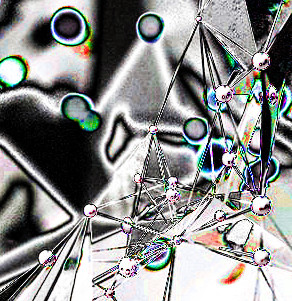Water guides crystal growth
 Water could be key to the next generation of solar cells.
Water could be key to the next generation of solar cells.
Progress is being made in labs around the world using perovskites - an exciting and versatile nanomaterial with a crystal structure - to create new kinds of photovoltaics, semiconductors and LEDs.
Perovskites have already shown similar efficiency to silicon, are cheaper to make, and feature a ‘tuneable bandgap’, meaning the energy they are able to absorb, reflect or conduct can be changed to suit different purposes.
Ordinarily, water is kept as far away as possible during the process of creating perovskites. The presence of moisture can lead to defects in the materials, causing them to fall apart more quickly when they are being used in a device.
For this reason, perovskites for scientific research are often made via spin coating in the sealed environment of a nitrogen glove box.
But now, members of the ARC Centre of Excellence in Exciton Science have found a simple way to control the growth of phase-pure perovskite crystals by harnessing water as a positive factor. This liquid-based mechanism works at room temperature, so the approach remains cost effective.
The team found that by changing the ratio of water to solvent during the early stages of the process, they could choose to grow different types of perovskite crystals, with structures to suit various purposes.
“By carefully tuning the concentration of water in the precursor solution, we realised the precise control of particular perovskite phases,” says researcher Dr Wenxin Mao of Monash University.
“We now understand the internal mechanics and function of water inside the precursor solution. By doing that we can further use water to control the crystallisation process,” said fellow researcher Qingdong Lin, a PhD student at Monash University.
To demonstrate the quality of the end product, crystals produced via this approach were coupled with back-contact electrodes through nanofabrication to create X-ray detection devices.
This test sample performed at a similar level to commercial X-ray detectors currently being used in real-world settings, like medical imaging and Geiger counters, and out-performed prototype perovskite X-ray detectors developed using slower, more complicated fabrication methods.
More details are accessible here.







 Print
Print